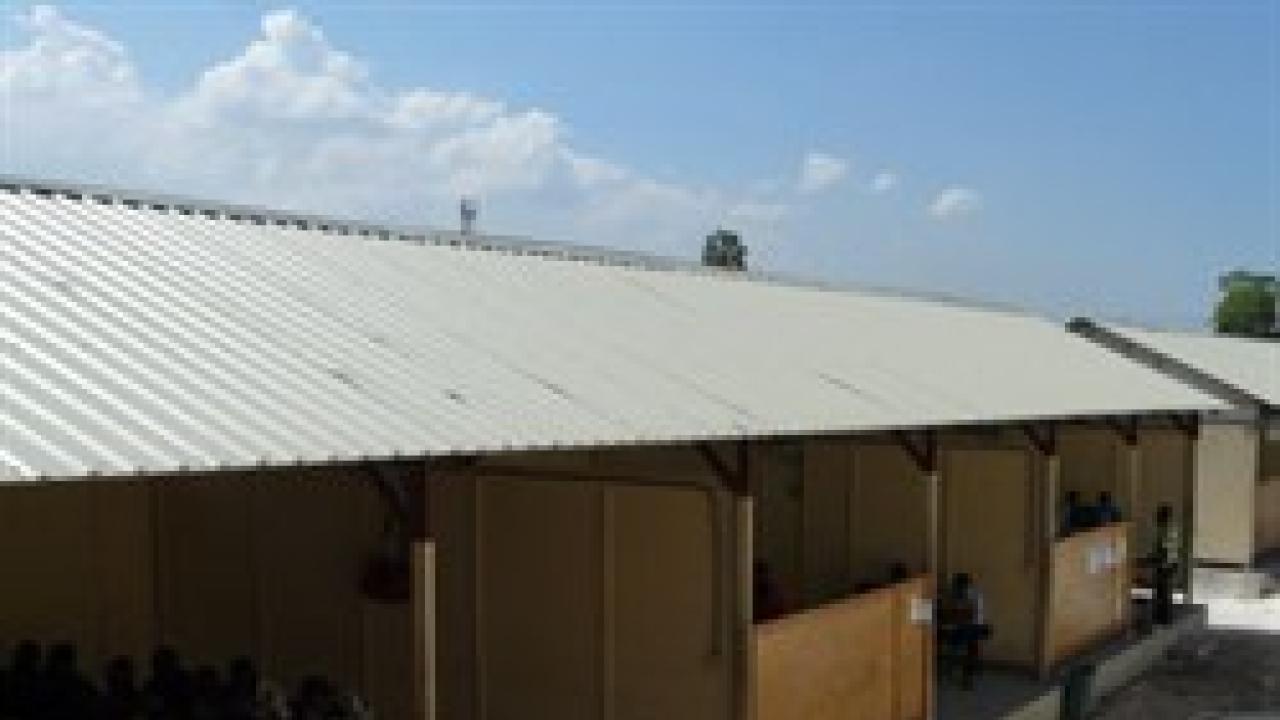
Haiti, ranked consistently as one of the world's poorest
countries, could hardly have been less prepared for the disaster
that struck there on 12 January 2010: a 7.0-magnitude earthquake
that claimed the lives of an estimated 316,000 people and left
nearly 1,000,000 homeless.
Now, two years after the devastating event, Haiti continues to
struggle back to a semblance of normalcy. In its capital,
Port-au-Prince, streets remain partially covered with rubble; many
residents still live in crude shanty towns just a stone's throw
away from the once-grand Presidential Palace, itself still in
ruins.
Indeed, the general condition of post-earthquake Haiti could be a
metaphor for the state of science in that country. With an eye to
nurturing basic sciences in Haiti, ICTP recently held a school on
seismology from 15 to 28 January 2012. Organized by Karim Aoudia,
an earthquake expert in ICTP's Earth System Physics group, and with
the local help of the Faculte des Sciences of the Universite d'Etat
du Haiti (UEH) and the university's rector, Jean Vernet Henry, the
two-week school offered an intensive course on the full spectrum of
earthquake sciences, from physics to risk reduction.
Aoudia has run such workshops in other earthquake hot spots around
the world, including Africa and Central America. Typically such
courses would attract students and young scientists in fields
ranging from basic to applied sciences. But in Haiti, those
disciplines do not exist.
"The situation for science in Haiti is bad," said Aoudia, "there
is no money to support it, no local expertise, and few incentives
to keep professors in the country." What few professors they do
have will be retiring in the next few years, presenting an urgent
need to train their replacements.
Perhaps most surprisingly--for a country straddling the
intersection of the North American and Caribbean tectonic
plates--there are no seismologists in Haiti.
Aoudia hopes to change that, and the school is a small step in
Haiti's long road to recovery. "The long-term issue is to build
basic science capacity in the country," said Aoudia, noting that
currently there is no possibility to earn a science degree in
Haiti. Two years after the earthquake, efforts are still focussed
on rebuilding the infrastructure to support education. At UEH,
where the earthquake workshop was held, classes meet in hangar-type
structures open to the elements. There are no walls between
classrooms, and a bustling market in front of the campus adds to
the high-level of background noise competing for the students'
attention.
With the help of UEH staff, Aoudia was able to secure 20 computers
with a steady power supply. Participants, mostly from UEH's
engineering programme, learned the theory behind earthquakes and
how to read and analyse data sets on Haiti earthquakes that
occurred during the weeks of the workshop. They also gained
information on life-saving actions to take should an earthquake
strike; Aoudia said that the students were keen to spread this
knowledge. "They told me that one of the first things they will do
after the workshop is visit all of the schools in Port-au-Prince to
instruct young Haitians on what to do if there is an earthquake,"
he said.
In addition to sponsoring the Port-au-Prince workshop, ICTP has
donated 150 science books to UEH (they are starting a new library),
and is actively recruiting Haitian students for its Postgraduate
Diploma Programme.
But much more is needed if Haiti is to grow a science program that
could help alleviate its overwhelming poverty. Although the
2010 earthquake may have focussed the world's attention (and
much-needed funding) to the Caribbean island, momentum from that
wave of goodwill is slowing, according to Aoudia. "We need to
encourage more activity now before people forget about the problems
that still exist in Haiti," he said, adding, "Science can play an
important part in Haiti's long-term sustainable development."
















